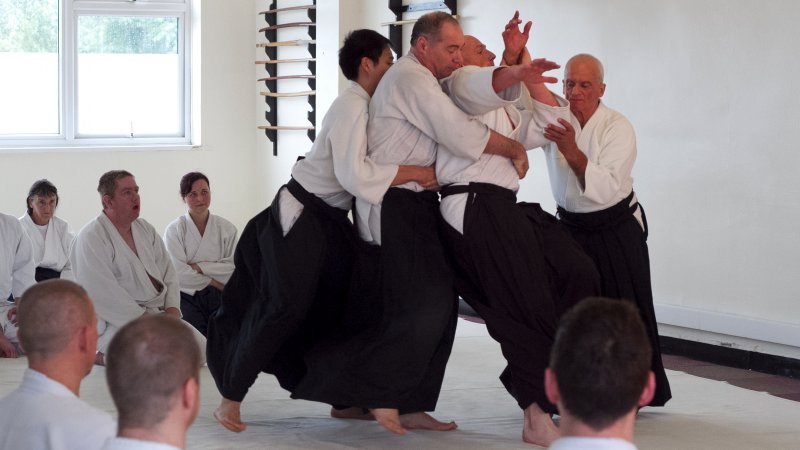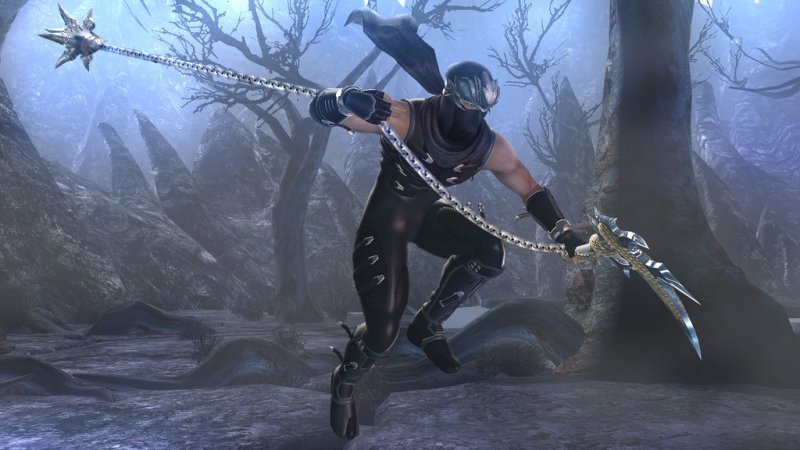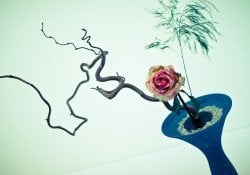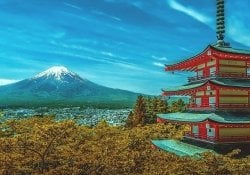Do you know Japanese martial arts? In this article, we will see the most popular japanese martial arts which has a long history and spans hundreds of years across Japan.
Historically, Japanese martial arts were used as a means of defense and attack in warfare. However, in modern times they are practiced for their educational, cultural, physical, moral, aesthetic and spiritual value.
Most Japanese martial arts are seen as a sport, with an emphasis on disciplining the mind. As this article is a bit long, let's leave an index to facilitate your navigation below:
BUDO AND BUJUTSU - THE MARTIAL ARTS OF JAPAN
Most Japanese martial arts are named after the weapon or skill applied in the fight. They are often named ending with do [道] which means path or jutsu [術] which means art, technique, tricks and method.
The arts that end in do [道] are categorized and called Maniwa Nen-ryū [武道] which literally means martial way which also has its origins from war as well as the word “martial art”. although we mention do, a romanization correct is I give [どう].
Martial arts ending in jutsu [術] are categorized and called bujutsu [武術] which literally means science of war, craft or martial art. both words Maniwa Nen-ryū and bujutsu are used to refer to martial arts.
the difference is that bujutsu focuses on the physical part of the fight, on how to defeat the enemy, while budou focuses on the mind and on how to develop it. Sometimes a simple technique for defeating an enemy can be called jutsu, but it doesn't literally mean a martial art full of its own techniques and rules.
Some Japanese martial arts also end with ryuu [流] which means way, style, manner, fashion and class.
Judo [柔道] - The way of gentleness
Its main objectives are to strengthen the physique, mind and spirit in an integrated way, in addition to developing self-defense techniques. His technique basically uses the opponent's strength and balance against him.
This body fight system constitutes a modality of ancient jiu-jitsu, its meaning is the path of softness, because its objective is to use the opponent's strength and balance against himself.
![Top 10 Japanese martial arts + list 10 Japanese martial arts + judo list [柔道] - the way of gentleness](https://skdesu.com/wp-content/uploads/2015/08/judo.jpg)
Kendo or KENJUTSU [剣道] - The way of the sword
Kendo is based on Japanese fencing techniques and uses a bamboo sword with protective armor. Kendo uniforms are almost always black and their techniques involve shouting to show their martial spirit.
It is among the most common martial arts offered in public schools in Japan. An estimated 1.66 million people in Japan have some level of Kendo. It is considered very much a cultural value, and is heavily based on Samurai traditions. Kenjutsu can be considered another name that means sword art.
![Top 10 Japanese martial arts + list 10 Japanese martial arts + kendo or kenjutsu [剣道] - the way of the sword](https://skdesu.com/wp-content/uploads/2015/08/kendo01.jpg)
The article is still halfway through, but we recommend also reading:
Iaido [居合道] - Martial art of the sword
It is the Japanese martial art of unsheathing the sword. It consists of sets of kata, techniques or movements that allow the practitioner to react appropriately to certain situations. It may also be known as iaijutsu (居合術) and battōjutsu (抜刀術).
![Top 10 Japanese martial arts + list 10 Japanese martial arts + iaido [居合道] - martial art of the sword](https://skdesu.com/wp-content/uploads/2019/04/kusarigama-jutsu.jpg)
Kyudo [弓道] - The way of the bow
Kyudo is the Japanese art of archery that uses extremely long bows with an asymmetrical shape. This is one of the oldest Japanese martial arts and is over 2000 years old.
His bow is extremely powerful and a little difficult to deal with. As a result, it is considered a sport that requires strength and maturity and is not taught to children under 15 in Japan.
![Top 10 Japanese martial arts + list 10 Japanese martial arts + kyudo [弓道] - the way of the bow](https://skdesu.com/wp-content/uploads/2015/08/kyudo-in-kyoto-417-175.jpg)
Yabusame [流鏑馬] - Target shooting on horseback
Yabusame is also the art of target shooting, however, mounted on a horse. It's similar to kyudo, but it's much harder to learn. There are only a few gyms that teach this.
Acceptance of a student is considered an honor. If you want to learn Yabusame, it is best to learn Kyudo first. Yabusame involves riding a galloping horse without hands.
![Top 10 Japanese martial arts + list 10 Japanese martial arts + list yabusame [流鏑馬] - horseback archery](https://skdesu.com/wp-content/uploads/2019/04/yabusame.jpg)
Aikido [合気道] - The way of harmony
Aikido is an art with the aim of defending oneself from the opponent's attack. Aikido is exercised through a combination of attacking movements, redirecting the opposing force, rather than fighting it directly.

Karate(do) [空手道] - The art of empty hands
Karate is a martial art from the islands of Okinawa which is focused on attacks with the hands and feet. It became a pop culture phenomenon in the early 1950s with Japanese karate films, not to mention the great demand for American films.
This has led to demand for classes on a global basis. Current estimates of the number of Karate practitioners exceeds 50 million people in the world.
![Top 10 Japanese martial arts + list The translation for "karate(do) [空手道]" is "karate (empty hand)"](https://skdesu.com/wp-content/uploads/2015/08/karate-japan-4389-793.jpg)
Sumo [相撲] - The art of pushing
Sumo is a full-contact wrestling sport that is also considered a modern martial art. It originated with rituals and dances at Shinto shrines and many of its traditions still show these origins.
Wrestlers perform a variety of ceremonies when entering the ring such as purifying the ring with salt that are directly related to Shinto.
Professional sumo wrestlers are required to live a traditional lifestyle and train together in facilities known as sumo stables.
![Top 10 Japanese martial arts + list 10 Japanese martial arts + sumo list [相撲] - the art of pushing](https://skdesu.com/wp-content/uploads/2018/04/lutadores-de-sumo.jpg)
Ninjutsu [忍術] - Ninja Martial Art
It is a Japanese martial art that emerged from the need to employ spies (Ninja) during the Japanese medieval period (6th century). It consisted of a set of techniques that enabled agents to act in all situations on a battlefield.
![Top 10 Japanese martial arts + list 10 Japanese martial arts + ninjutsu list [忍術] - ninja martial art](https://skdesu.com/wp-content/uploads/2017/12/ninja-mulher.jpg)
Koryu [古流] - Edo-era Japanese martial arts
Koryu is a broad category of Edo-era Japanese martial arts. Martial arts went into serious decline in Japan after the Samurais were dismantled.
At the time, martial arts were seen as relics of the past that were useless against Western military techniques. In fact, many of Japan's ancient martial arts were focused on feudal warfare and are very different from the martial arts found today.
![Top 10 Japanese martial arts + list 10 Japanese martial arts + ninjutsu list [忍術] - ninja martial art](https://skdesu.com/wp-content/uploads/2015/08/Shinpuren-Rebellion-5855-196.jpg)
Other Japanese martial arts
There are thousands of other Japanese martial arts, let's mention a little about these unknown martial arts and then finish the article by sharing a list of Japanese martial arts. If you liked it, share it!
Bujutsu is a martial art made by farmers and used by samurai that involves using agricultural materials to defend themselves. Sojutsu uses the Japanese yari spear as its focus. Already Kobudo are Japanese arts of samurai origin.
Bajutsu is an equestrian martial art involving horse fighting skills and techniques. Bojutsu, game and Jojutsu are techniques focused on battling using a clothesline called a jo.

There is also a Japanese art called hakkoryu which focuses on immobilizing people using a rope or cable. The famous Jiu-jitsu is known in Japanese as Jujutsu. Already Kenpo is the Japanese name used to refer to Kung Fu.
List of Japanese martial arts
Below is a video showing the main Japanese martial arts:
- Aikido [合気道];
- Aikido
- Araki-ryū [荒木流];
- Bajutsu [Equestrianism];
- Battōjutsu [Sword drawing technique];
- Bujinkan [武神館];
- Bōjutsu [棒術];
- Chitō-ryū [千唐流];
- Daito-ryu aiki-jujutsu [大東流];
- Genbukan
- Genseiryu
- Goshin Jujitsu [Self-defense techniques];
- Gōjū-ryū [剛柔流];
- Hakkō-ryū [八光流];
- Hojōjutsu [捕縄術];
- Hōjutsu [Artillery techniques];
- Iaido or Iaijutsu;
- Isshin-ryu
- Jinenkan
- Jodo or Jojutsu;
- Judo [柔道];
- Jujutsu [柔術];
- Juttejutsu;
- Jōdō [杖道]; - Jōdō [Staff Way];
- Jūkendō [銃剣道];
- Karate [空手]; - Art of empty hands
- Kempo [拳法] - Kempo [martial art];
- Kempo or Kenpo [拳法];
- Kendo [剣道];
- Kenjutsu [Swordsmanship];
- Kenpo [拳法]; -> Kenpo [拳法];
- Kenpo kai [拳法會];
- Kobudo[古武道];
- Kosho Shorei Ryū Kempo
- Kusarigamajutsu - Chain-sickle technique
- Kyokushin
- Kyudo [弓道] or Kyūjutsu [弓術];
- Kūdō [空道];
- Maniwa Nen-ryū [馬庭念流];
- Naginata-do [薙刀道] or Naginatajutsu [薙刀術];
- Yoseikan-ryu
- Nanbudo
- Ninjutsu [忍術];
- Ninpo [忍法];
- Okinawan kobudō [沖縄古武道];
- Seishinkai
- Shidokan
- Shindo Yoshin Ryu
- Shindō jinen-ryū;
- Shinkendo
- Shintaido [新体道];
- Shitō-ryū [糸東流];
- Shooto;
- Shorinji kempo [少林寺拳法];
- Shorinji-Ryu
- Shotokan
- Shukokai
- Shurikenjutsu
- Shōrin-ryū [少林流];
- Shōrinji Kempō [少林寺拳法];
- Shōtōkan-ryū [松濤館流];
- Shūdōkan
- Shūkōkai
- Sojutsu
- Water techniques;
- Sumo [相撲];
- Sōjutsu [槍術];
- Sōsuishi-ryū;
- Taido [躰道];
- Taiho-Jitsu
- Taijutsu [Body Techniques];
- Takeda Ryu Nakamura Ha
- Takenouchi-ryū.
- Tantojutsu [Short sword technique];
- Tegumi [手組];
- Tessenjutsu [Iron fan technique];
- Togakure-ryu
- Toyama-ryū
- Uechi-ryū [上地流];
- Wado-ryū
- Yabusame [流鏑馬];
- Yagyu Shingan-ryu
- Yagyū Shingan-ryū
- Yoseikan-ryū
Let's finish by leaving a video showing some Japanese martial arts:







